Country
Crash of a Cessna 208B Grand Caravan in Olive Creek: 2 killed
Date & Time:
Jan 18, 2014 at 1057 LT
Registration:
8R-GHS
Survivors:
No
Schedule:
Olive Creek - Imbaimadai
MSN:
208B-0830
YOM:
2000
Flight number:
TGY700
Crew on board:
1
Crew fatalities:
Pax on board:
1
Pax fatalities:
Other fatalities:
Total fatalities:
2
Captain / Total hours on type:
2555.00
Aircraft flight hours:
17998
Circumstances:
On 17th January, 2014, the day before the accident, the pilot departed from his company base, Ogle International Airport (SYGO) with another aircraft, a Cessna 208B, Registration – 8R-GHT. He was tasked to do two days of shuttling; the first day between Olive Creek and Ekereku Bottom Airstrips, and the second day between Olive Creek and Imbaimadai Airstrips. The pilot was accompanied by a third crew/loader, whose duty was to ensure that the aircraft was properly loaded for each trip, and an aircraft engineer who was assigned to carry out minor maintenance duties and refuel the aircraft as required for the duration of the shuttle operations. It was reported that on the first day, during a landing at Ekereku Bottom, the aircraft encountered severe wind conditions that resulted in a hard landing. The pilot was very concerned about the hard landing and expressed this to several individuals. He was concerned enough to log the hard landing in the Aircraft Technical Log. After the hard landing the aircraft was visually inspected by the engineer who declared the aircraft fit for flight. However while taxying prior to takeoff the aircraft suffered a right brake seizure. The engineer freed and bled the brake line. Tests were done on the brakes and the aircraft was flown to Olive Creek. The hard landing and the brake failure were reported to base and an instruction was passed that this aircraft should be brought back to Ogle by another pilot. Another Cessna 208B aircraft, 8R-GHS, the accident aircraft, was left with the pilot for him to complete his shuttle schedule the next day. On the afternoon of the first day, the pilot flew this aircraft, 8R-GHS to Kamarang Airstrip, where he overnighted. On the second day, 18th January, 2014, he departed Kamarang at 10:30hrs UTC for Olive Creek with the engineer and the loader. The engineer was left at Olive Creek. The pilot, with the loader, did one shuttle from Olive Creek to Imbaimadai. He returned to Olive Creek where the aircraft was refueled and then did three shuttles between Olive Creek and Imbaimadai. After these three shuttles the aircraft was again refueled. He completed one shuttle, Olive Creek/Imbaimadai/Olive Creek and had just taken off on the second in this series of shuttles when the accident occurred during midmorning. Both the pilot and the third crew were killed in the crash.
Probable cause:
The investigation revealed that the probable cause of the accident was due to a power loss suffered by the engine. The power loss was associated with the fracture of one of the 1st stage compressor stator vanes by fatigue. The fatigue crack originated from a lack of brazing adhesion extending over approximately 0.280 inches along the chord length and 0.050 inches in the direction of the shroud thickness and was located between the leading edge and mid-chord of the vane.
The following findings were identified:
1. The flight was one of a series of cargo shuttles that had originated the day before the accident, with another aircraft that was fitted with the Blackhawk modification.
2. The hard landing followed by the brake failure that occurred on the originating day had upset the pilot and caused him much concern.
3. A decision was taken to replace the original aircraft being used by the accident pilot with another one, which was also fitted with the Blackhawk modification.
4. The pilot had completed five shuttles on the day of the accident. The sixth shuttle was the accident flight.
5. The weather was satisfactory for VFR operations.
6. There was no fire.
7. Both the pilot and the third crew/loader were killed in this accident.
8. This accident occurred 2½ minutes after take-off.
9. The wreckage site was difficult to access, this along with unavailability of suitable equipment, contributed to the delay in extraction of the bodies.
The following findings were identified:
1. The flight was one of a series of cargo shuttles that had originated the day before the accident, with another aircraft that was fitted with the Blackhawk modification.
2. The hard landing followed by the brake failure that occurred on the originating day had upset the pilot and caused him much concern.
3. A decision was taken to replace the original aircraft being used by the accident pilot with another one, which was also fitted with the Blackhawk modification.
4. The pilot had completed five shuttles on the day of the accident. The sixth shuttle was the accident flight.
5. The weather was satisfactory for VFR operations.
6. There was no fire.
7. Both the pilot and the third crew/loader were killed in this accident.
8. This accident occurred 2½ minutes after take-off.
9. The wreckage site was difficult to access, this along with unavailability of suitable equipment, contributed to the delay in extraction of the bodies.
Final Report:
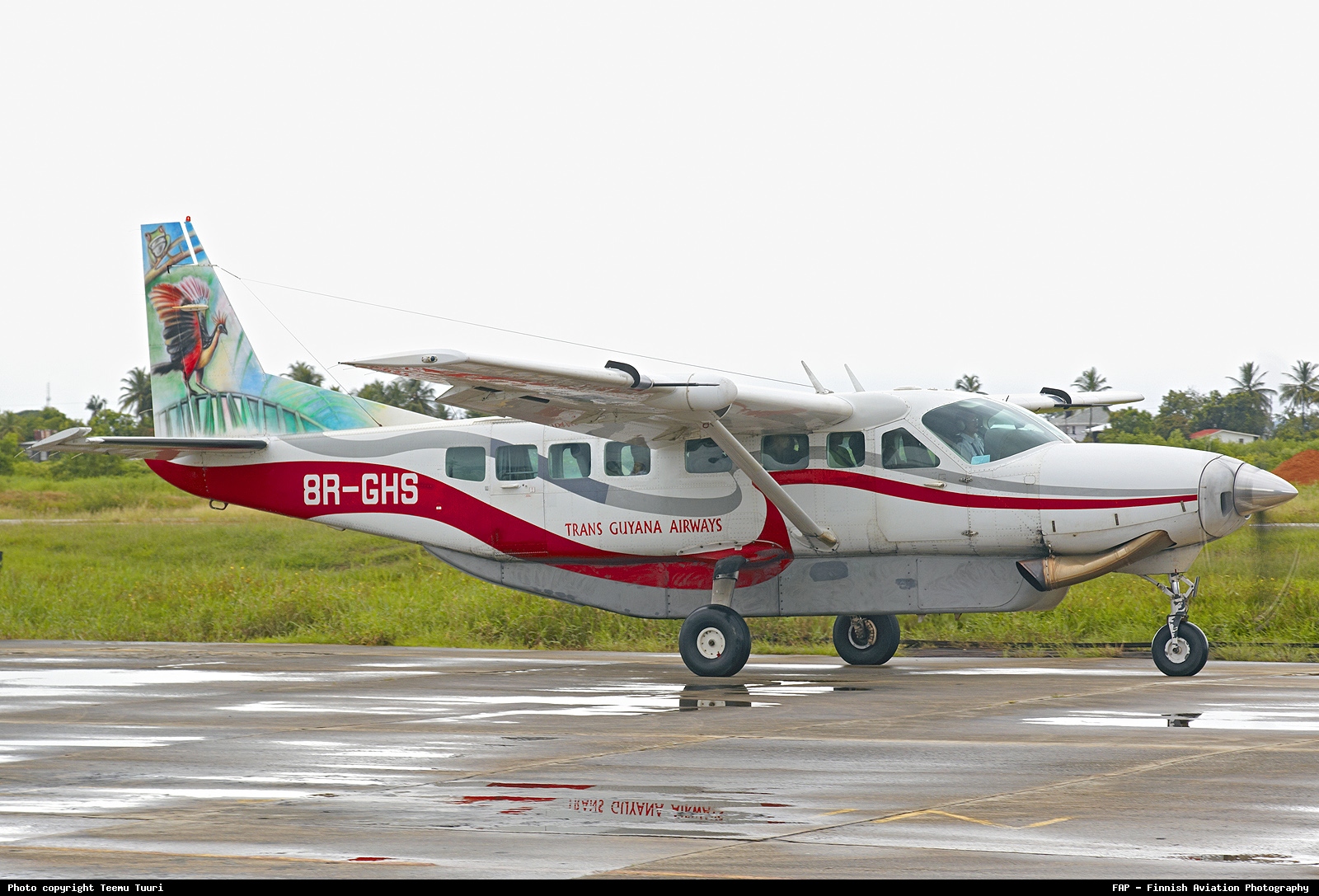
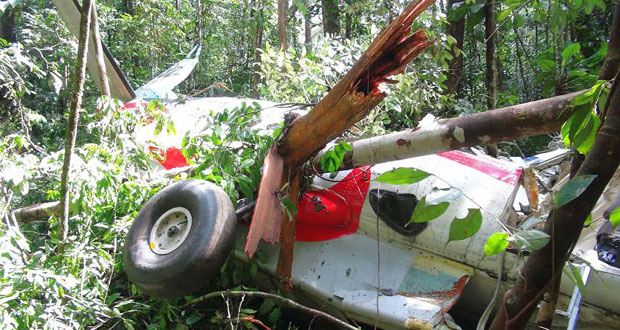

Crash of a Cessna 208B Grand Caravan off Kalaupapa: 1 killed
Date & Time:
Dec 11, 2013 at 1522 LT
Registration:
N687MA
Survivors:
Yes
Schedule:
Kalaupapa - Honolulu
MSN:
208B-1002
YOM:
2002
Crew on board:
1
Crew fatalities:
Pax on board:
8
Pax fatalities:
Other fatalities:
Total fatalities:
1
Captain / Total hours on type:
250.00
Aircraft flight hours:
4881
Circumstances:
The airline transport pilot was conducting an air taxi commuter flight between two Hawaiian islands with eight passengers on board. Several passengers stated that the pilot did not provide a safety briefing before the flight. One passenger stated that the pilot asked how many of the passengers had flown over that morning and then said, “you know the procedures.” The pilot reported that, shortly after takeoff and passing through about 500 ft over the water, he heard a loud “bang,” followed by a total loss of engine power. The pilot attempted to return to the airport; however, he realized that the airplane would not be able to reach land, and he subsequently ditched the airplane in the ocean. All of the passengers and the pilot exited the airplane uneventfully. One passenger swam to shore, and rescue personnel recovered the pilot and the other seven passengers from the water about 80 minutes after the ditching. However, one of these passengers died before the rescue personnel arrived. Postaccident examination of the recovered engine revealed that multiple compressor turbine (CT) blades were fractured and exhibited thermal damage. In addition, the CT shroud exhibited evidence of high-energy impact marks consistent with the liberation of one or more of the CT blades. The thermal damage to the CT blades likely occurred secondary to the initial blade fractures and resulted from a rapid increase in fuel flow by the engine fuel control in response to the sudden loss of compressor speed due to the blade fractures. The extent of the secondary thermal damage to the CT blades precluded a determination of the cause of the initial fractures. Review of airframe and engine logbooks revealed that, about 1 1/2 years before the accident, the engine had reached its manufacturer-recommended time between overhaul (TBO) of 3,600 hours; however, the operator obtained a factory-authorized, 200-hour TBO increase. Subsequently, at an engine total time since new of 3,752.3 hours, the engine was placed under the Maintenance on Reliable Engines (MORE) Supplemental Type Certificate (STC) inspection program, which allowed an immediate increase in the manufacturer recommended TBO from 3,600 to 8,000 hours. The MORE STC inspection program documents stated that the MORE STC was meant to supplement, not replace, the engine manufacturer’s Instructions for Continued Airworthiness and its maintenance program. Although the MORE STC inspection program required more frequent borescope inspections of the hot section, periodic inspections of the compressor and exhaust duct areas, and periodic power plant adjustment/tests, it did not require a compressor blade metallurgical evaluation of two compressor turbine blades; however, this evaluation was contained in the engine maintenance manual and an engine manufacturer service bulletin (SB). The review of the airframe and engine maintenance logbooks revealed no evidence that a compressor turbine metallurgical evaluation of two blades had been conducted. The operator reported that the combined guidance documentation was confusing, and, as a result, the operator did not think that the compressor turbine blade evaluation was necessary. It is likely that, if the SB had been complied with or specifically required as part of the MORE STC inspection program, possible metal creep or abnormalities in the turbine compressor blades might have been discovered and the accident prevented. The passenger who died before the first responders arrived was found wearing a partially inflated infant life vest. The autopsy of the passenger did not reveal any significant traumatic injuries, and the autopsy report noted that her cause of death was “acute cardiac arrhythmia due to hyperventilation.” Another passenger reported that he also inadvertently used an infant life vest, which he said seemed “small or tight” but “worked fine.” If the pilot had provided a safety briefing, as required by Federal Aviation Administration regulations, to the passengers that included the ditching procedures and location and usage of floatation equipment, the passengers might have been able to find and use the correct size floatation device.
Probable cause:
The loss of engine power due to the fracture of multiple blades on the compressor turbine wheel, which resulted in a ditching. The reason for the blade failures could not be determined due to secondary thermal damage to the blades.
Final Report:
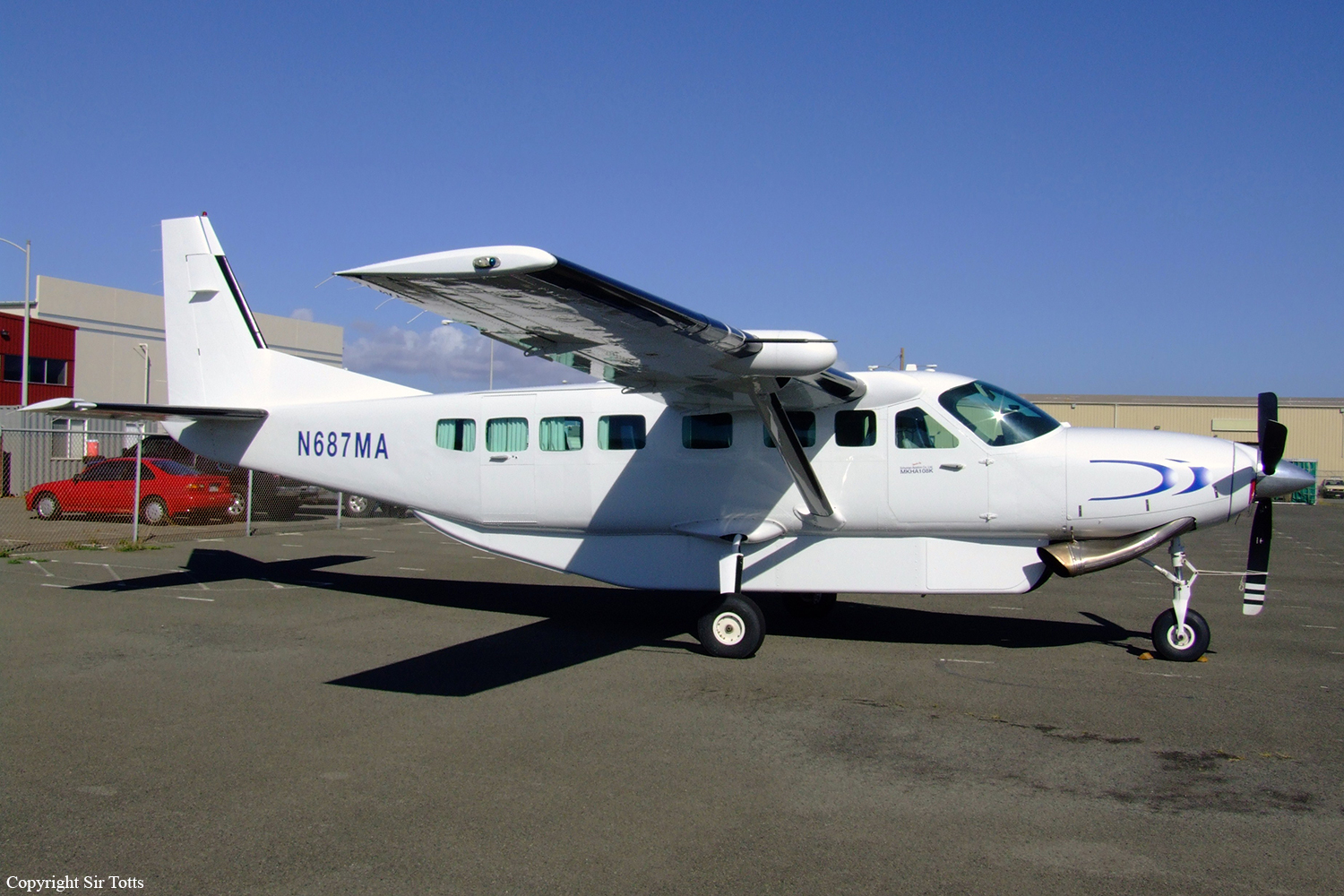


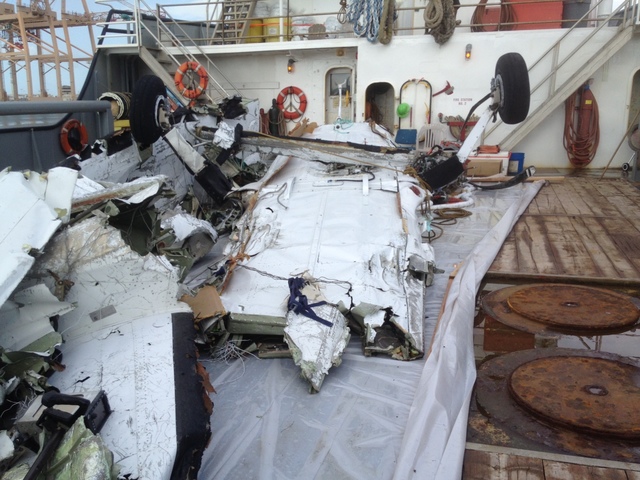



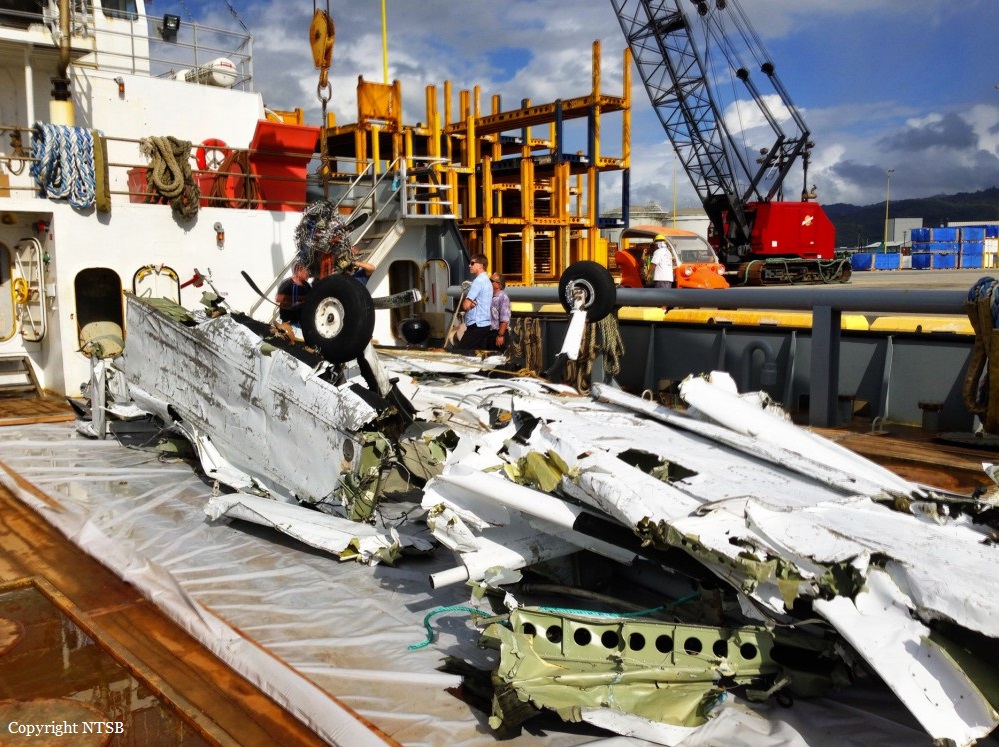

Crash of a Cessna 208B Grand Caravan in Saint Mary's: 4 killed
Date & Time:
Nov 29, 2013 at 1824 LT
Registration:
N12373
Survivors:
Yes
Schedule:
Bethel - Mountain Village - Saint Mary's
MSN:
208B-0697
YOM:
1998
Flight number:
ERR1453
Crew on board:
1
Crew fatalities:
Pax on board:
9
Pax fatalities:
Other fatalities:
Total fatalities:
4
Captain / Total hours on type:
1800.00
Aircraft flight hours:
12653
Circumstances:
The scheduled commuter flight departed 40 minutes late for a two-stop flight. During the first leg of the night visual flight rules (VFR) flight, weather at the first destination airport deteriorated, so the pilot diverted to the second destination airport. The pilot requested and received a special VFR clearance from an air route traffic controller into the diversion airport area. Review of automatic dependent surveillance-broadcast data transmitted by the airplane showed that, after the clearance was issued, the airplane's track changed and proceeded in a direct line to the diversion airport. Postaccident examination of the pilot's radio showed that his audio panel was selected to the air route traffic control (ARTCC) frequency rather than the destination airport frequency; therefore, although the pilot attempted to activate the pilot-controlled lighting at the destination airport, as heard on the ARTCC frequency, it did not activate. Further, witnesses on the ground at St. Mary's reported that the airport lighting system was not activated when they saw the accident airplane fly over, and then proceed away from the airport. Witnesses in the area described the weather at the airport as deteriorating with fog and ice. About 1 mile from the runway, the airplane began to descend, followed by a descending right turn and controlled flight into terrain. The pilot appeared to be in control of the airplane up to the point of the right descending turn. Given the lack of runway lighting, the restricted visibility due to fog, and the witness statements, the pilot likely lost situational awareness of the airplane's geographic position, which led to his subsequent controlled flight into terrain. After the airplane proceeded away from the airport, the witnesses attempted to contact the pilot by radio. When the pilot did not respond, they accessed the company's flight tracking software and noted that the airplane's last reported position was in the area of the airplane's observed flightpath. They proceeded to search the area where they believed the airplane was located and found the airplane about 1 hour later. Postaccident examination of the airframe and engine revealed no mechanical malfunctions or anomalies that would have precluded normal operation. About 3/4 inch of ice was noted on the nonprotected surfaces of the empennage. However, ice formation on the airplane's inflatable leading edge de-ice boots was consistent with normal operation of the de-ice system, and structural icing likely was not a factor in the accident. According to the company's General Operations Manual (GOM), operational control was held by the flight coordinator for the accident flight, and the flight coordinator and pilot-in-command (PIC) were jointly responsible for preflight planning, flight delay, and release of the flight, which included the risk assessment process. The flight coordinator assigned the flight a risk level of 2 (on a scale of 1 to 4) due to instrument meteorological and night conditions and contaminated runways at both of the destination airports. The first flight coordinator assigned another flight coordinator to create the manifest, which listed eight passengers and a risk assessment level of 2. According to company risk assessment and operational control procedures, a risk level of 2 required a discussion between the PIC and flight coordinator about the risks involved. However, the flight coordinators did not discuss with the pilot the risks and weather conditions associated with the flight. Neither of the flight coordinators working the flight had received company training on the risk assessment program. At the time of the accident, no signoff was required for flight coordinators or pilots on the risk assessment form, and the form was not integrated into the company manuals. A review of Federal Aviation Administration (FAA) surveillance activities revealed that aviation safety inspectors had performed numerous operational control inspections and repeatedly noted deficiencies within the company's training, risk management, and operational control procedures. Enforcement Information System records indicated that FAA inspectors observed multiple incidences of the operator's noncompliance related to flight operations and that they opened investigations; however, the investigations were closed after only administrative action had been taken. Therefore, although FAA inspectors were providing surveillance and noting discrepancies within the company's procedures and processes, the FAA did not hold the operator sufficiently accountable for correcting the types of operational deficiencies evident in this accident, such as the operator's failure to comply with its operations specifications, operations training manual, and GOM and applicable federal regulations.
Probable cause:
The pilot's decision to initiate a visual flight rules approach into an area of instrument meteorological conditions at night and the flight coordinators' release of the flight without discussing the risks with the pilot, which resulted in the pilot experiencing a loss of situational awareness and subsequent controlled flight into terrain. Contributing to the accident were the operator's inadequate procedures for operational control and flight release and its inadequate training and oversight of operational control personnel. Also contributing to the accident was the Federal Aviation Administration's failure to hold the operator accountable for correcting known operational deficiencies and ensuring compliance with its operational control procedures.
Final Report:
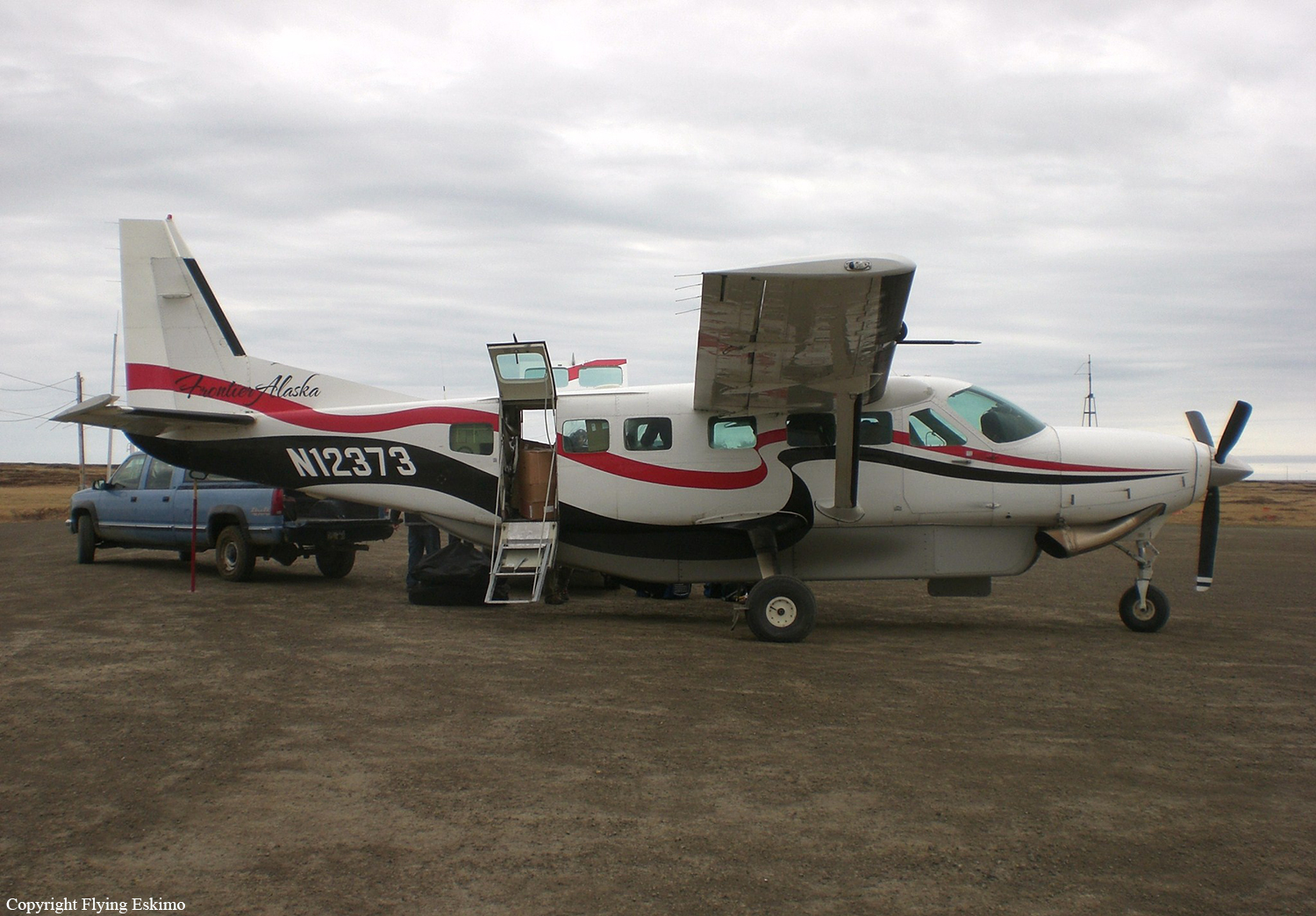


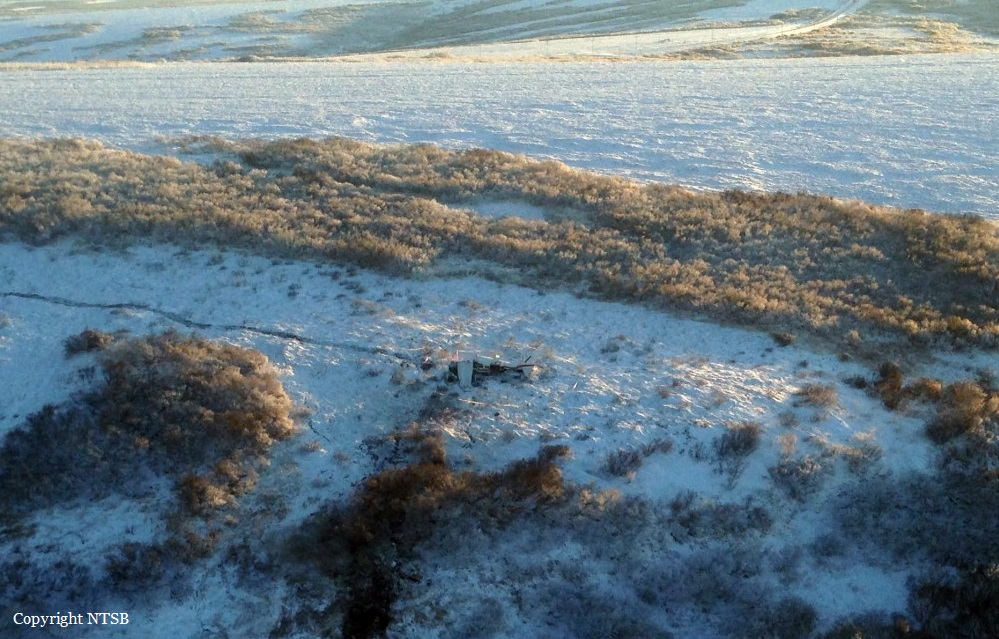
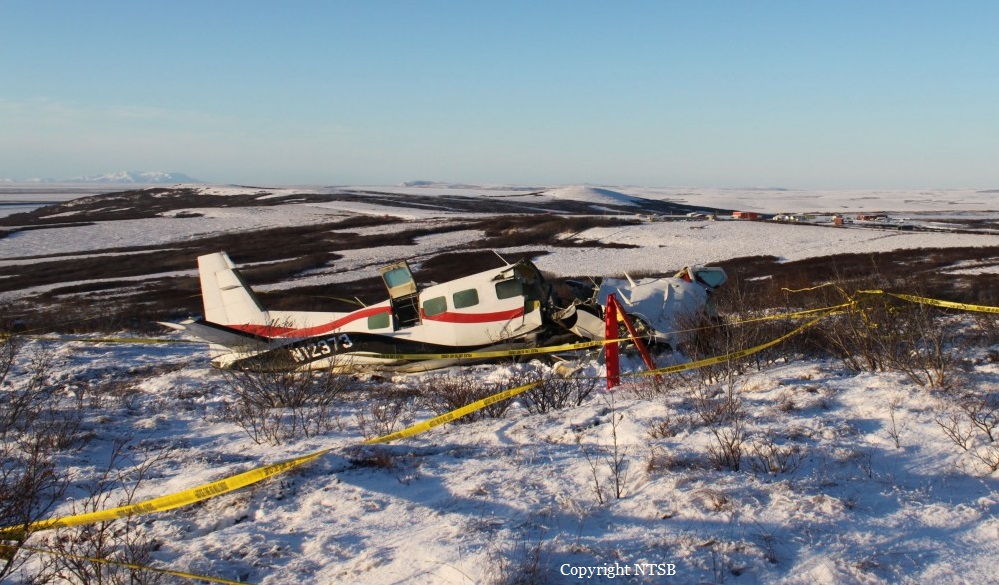
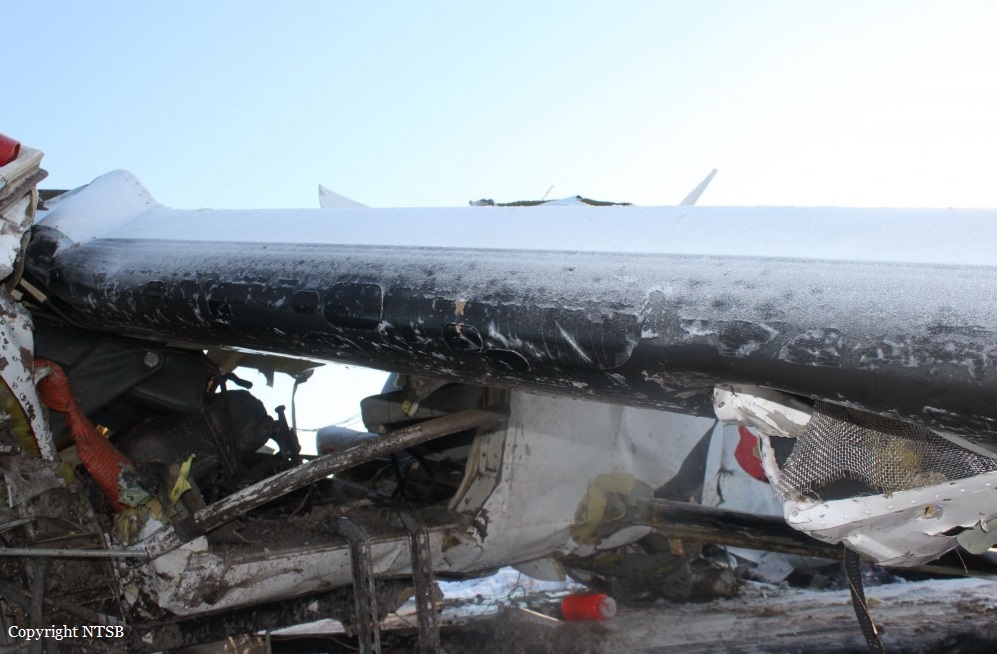
Crash of a Cessna 208B Grand Caravan in Kibeni: 3 killed
Date & Time:
Nov 25, 2013 at 1340 LT
Registration:
P2-SAH
Survivors:
Yes
Schedule:
Kamusi – Purari – Vailala – Port Moresby
MSN:
208B-1263
YOM:
2007
Crew on board:
1
Crew fatalities:
Pax on board:
9
Pax fatalities:
Other fatalities:
Total fatalities:
3
Captain / Total hours on type:
800.00
Circumstances:
On 25 November 2013, a Cessna Aircraft Company C208B Grand Caravan, registered P2-SAH and operated by Tropicair, departed Kamusi, Western Province, for Purari River, Gulf Province, at 0312 UTC on a charter flight under the instrument flight rules (IFR). There were 10 persons on board; one pilot and nine passengers . Earlier in the day, the aircraft had departed Port Moresby for Kamusi from where it flew to Hivaro and back to Kamusi before the accident flight. SAH was due to continue from Purari River to Vailala and Port Moresby. The pilot reported that the takeoff and climb from Kamusi were normal and he levelled off at 9,000 ft and completed the top-of-climb checklist. Between Kamusi and Purari River the terrain is mostly flat and forest covered, with areas of swampland and slow-moving tidal rivers. Habitation is very sparse with occasional small villages along the rivers. The pilot recalled that the weather was generally good in the area with a cloud base of 3,000 ft and good visibility between build-ups. The pilot reported that approximately 2 minutes into the cruise there was a loud ‘pop’ sound followed by a complete loss of engine power. After configuring the aircraft for best glide speed at 95 kts, the pilot turned the aircraft right towards the coast and rivers to the south, and completed the Phase-1 memory recall items for engine failure in flight. He was assisted by the passenger in the right pilot seat who switched on the Emergency Locator Transmitter (ELT) and at 0332 broadcast MAYDAY due engine failure on the area frequency. Checking the database in the on-board Global Positioning System (GPS), the pilot found the airstrip at Kibeni on the eastern side of the Palbuna River. The pilot, assisted by the passenger next to him, tried unsuccessfully to restart the engine using the procedure in the aircraft’s Quick Reference Handbook (QRH). The passenger continued to give position reports and to communicate with other aircraft. At about 3,000 ft AMSL the pilot asked for radio silence on the area frequency so he could concentrate on the approach to Kibeni airstrip, flying a left hand circuit to land in a south westerly direction. He selected full flaps during the final stages of the approach, which arrested the aircraft’s rate of descent, but the higher than normal speed of the aircraft during the approach and landing flare caused it to float and touch down half way along the airstrip. The disused 430 metre long Kibeni airstrip was overgrown with grass and weeds. It was about 60 ft above the river and 120 ft above mean sea level, with trees and other vegetation on the slope down to the river. The aircraft bounced three times and, because the aircraft’s speed had not decayed sufficiently to stop in the available length, the pilot elected to pull back on the control column in order to clear the trees that were growing on the slope between the airstrip and the river. The aircraft became airborne, impacting the crown of a coconut palm (that was almost level with the airstrip) as it passed over the trees. The pilot banked the aircraft hard left in an attempt to land/ditch along the river and avoid trees on the opposite bank. He then pushed forward on the control column to avoid stalling the aircraft and levelled the wings before the aircraft impacted the water. The aircraft came to rest inverted with the cockpit and forward cabin submerged and immediately filled with water. After a short delay while he gained his bearings under water, the pilot was able to undo his harness and open the left cockpit door. He swam to the rear of the aircraft, opened the right rear cabin door, and helped the surviving passengers to safety on the river bank. He made several attempts to reach those still inside the aircraft. When he had determined there was nothing further he could do to reach them, he administered first aid to the survivors with materials from the aircraft’s first aid kit. After approximately 20 minutes, villagers arrived in a canoe and transported the pilot and surviving passengers to Kibeni village across the river. About 90 minutes after the accident, rescuers airlifted the survivors by helicopter to Kopi, located 44 km north east of Kibeni.
Probable cause:
The engine power loss was caused by the fracture of one CT blade in fatigue, which resulted in secondary damage to the remainder of the CT blades and downstream components. The fatigue originated from multiple origins on the pressure side of the blade trailing edge. The root cause for the fatigue initiation could not be determined with certainty. All other damages to the engine are considered secondary to the primary CT blades fracture.
Final Report:
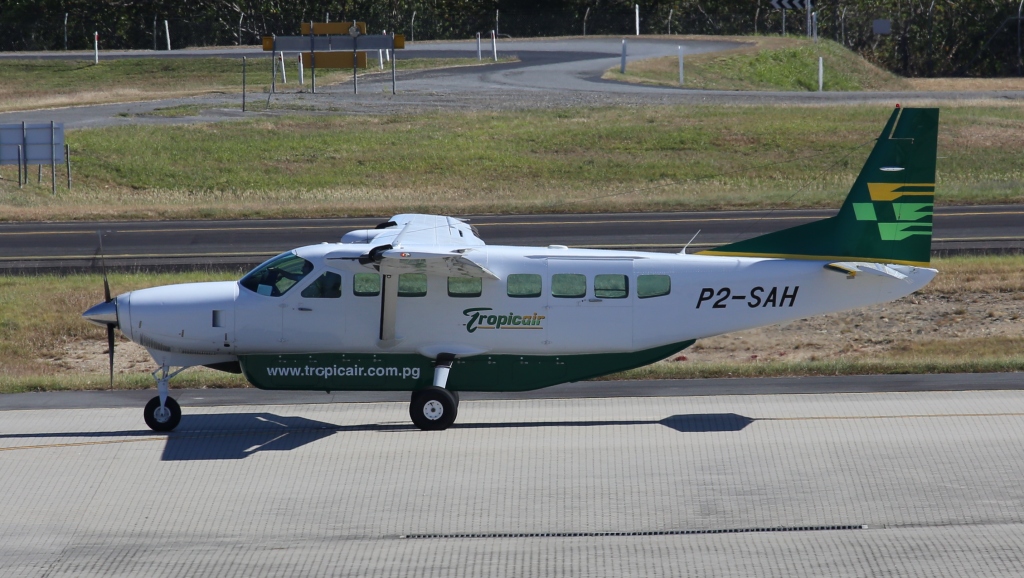
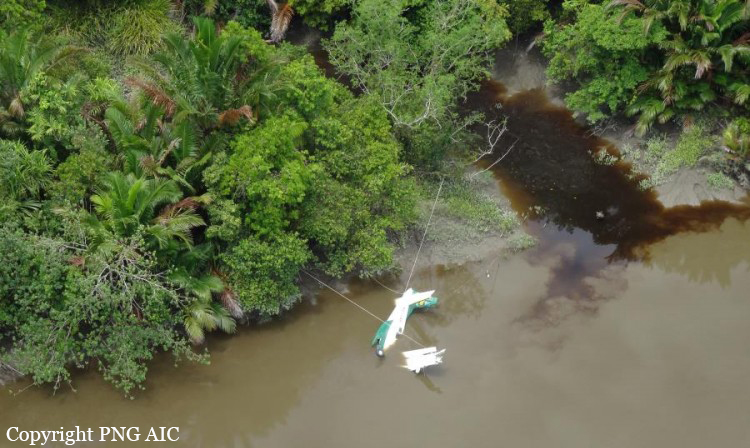

Crash of a Cessna 208B Grand Caravan near Loreto: 14 killed
Date & Time:
Oct 14, 2013 at 0907 LT
Registration:
XA-TXM
Survivors:
No
Schedule:
Los Mochis – Loreto – Ciudad Constitución
MSN:
208B-0947
YOM:
2002
Crew on board:
1
Crew fatalities:
Pax on board:
13
Pax fatalities:
Other fatalities:
Total fatalities:
14
Aircraft flight hours:
11840
Aircraft flight cycles:
12184
Circumstances:
The single engine aircraft departed Loreto Airport at 0901LT on a flight to Ciudad Constitución, carrying 13 passengers and one pilot. Weather conditions were poor with limited visibility and heavy rain falls due to the presence of the tropical storm 'Octave'. Six minutes after takeoff, while cruising at an altitude of 3,900 feet, the airplane impacted the slope of a rocky mountain located in the Sierra de La Giganta. The wreckage was found two days later some 26 km west of Loreto. The aircraft disintegrated on impact and all 14 occupants were killed.
Probable cause:
Controlled flight into terrain after the pilot suffered a spatial disorientation while cruising in unfavorable weather conditions due to the presence of the tropical storm 'Octave'.
Final Report:
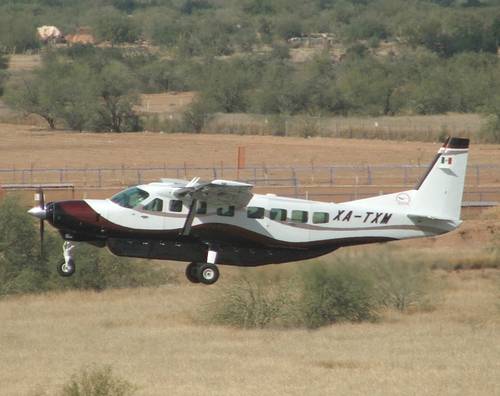

Crash of a Cessna 208B Grand Caravan in Likawage
Date & Time:
Oct 11, 2013
Registration:
5H-KEN
Survivors:
Yes
Schedule:
Likawage – Dar es Salaam
MSN:
208B-0384
YOM:
1994
Crew on board:
2
Crew fatalities:
Pax on board:
1
Pax fatalities:
Other fatalities:
Total fatalities:
0
Circumstances:
The single engine aircraft was engaged in a charter flight from Likawage to Dar es Salaam, carrying one passenger and two pilots. Ready for takeoff at threshold, the crew applied full power and maintained brakes. Despite the engine did not reach the takeoff power, the captain released brakes and initiated the takeoff roll. The aircraft rolled for about three-quarters of the runway when the engine reached the takeoff power. But the aircraft failed to rotate, continued, overran and eventually collided with trees, bursting into flames. All three occupants were slightly injured and the aircraft was partially destroyed by fire.
Crash of a Cessna 208B Grand Caravan in the Hudson Bay: 1 killed
Date & Time:
Sep 25, 2013 at 1400 LT
Registration:
C-FEXV
Survivors:
No
Schedule:
Sault Sainte Marie - Sault Sainte Marie
MSN:
208B-0482
YOM:
1995
Flight number:
MAL8988
Crew on board:
1
Crew fatalities:
Pax on board:
0
Pax fatalities:
Other fatalities:
Total fatalities:
1
Circumstances:
On behalf of Morningstar Air Express, the pilot departed Sault Sainte Marie Airport, south Ontario, in the morning, for a local training flight. For unknown reasons, the pilot did not maintain any radio contact with his base or ATC and continued to the north for about 1,200 km when the aircraft crashed in unknown circumstances in the Hudson Bay, some 500 km east of Churchill, Manitoba. The aircraft was destroyed and the pilot was killed.
Probable cause:
The exact cause of the accident remains unknown.








